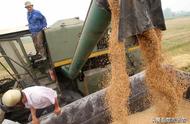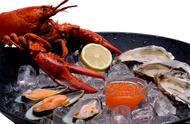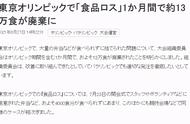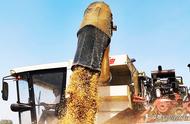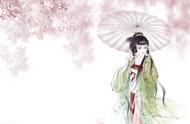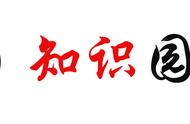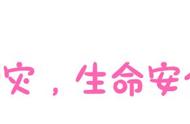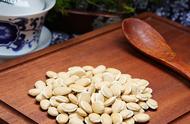我们在做阅读理解题时免不了要动笔做一些标记,以提示重点。但有的考生找不到重点,满篇地在生词、看不懂的地方画下划线。一遍没明白又画第二遍,以致于把试卷行间画得密密麻麻。这样一来都是重点,也就更找不出重点了。
Unclejoe的建议是学会以一些语块标识,把长句难句化简,再根据语块功能理解大意。因为我们阅读时大脑一瞬间接受信息的容量是有限的,所以我们会对长句难句感到畏难,需要在长句难句中生成意群的停顿,这就是断句。断句要正确才能有更好的理解。我把正确的断句叫做语块。
根据使用电脑键盘的方便,我设计了如下一些语块标识:< >状语或状语从句;[ ]定语或定语从句;{ }名词性结构或名词性从句;| 并列结构或并列句;【 】层次,等等。这种语块的划分是相对的,没有统一标准,以适合理解为宜, 请读者在阅读中加深印象。
至于少数生词和短语,只要不影响答题,考试时就不要纠缠,等讲评学习时再作深究。
一、原文再现
2022 全国卷I B篇
阅读下列短文,从每题所给的 A、B、C、D四个选项中选出最佳选项。
<Like most of us>, I try to be mindful of food [that goes to waste]. The arugula (芝麻菜) was to make a nice green salad, <rounding out a roast chicken dinner>. But I ended up working late. Then friends called with a dinner invitation. I stuck the chicken <in the freezer>. But as days passed, the arugula went bad. Even worse, I had unthinkingly bought way too much: I could have made six salads <with what I threw out>.
<In a world [where nearly 800 million people a year go hungry’>, “food waste goes against the moral grain,” [as Elizabeth Royte writes <in this month’s cover story>]. It’s jaw-dropping {how much perfectly good food is thrown away}—<from “ugly” (but quite eatable) vegetables [rejected by grocers] to large amounts of uneaten dishes [thrown into restaurant garbage cans]>.
Producing food [that no one eats] wastes the water, fuel, and other resources [used to grow it]. That makes food waste an environmental problem. <In fact>, Royte writes, {“<if food waste were a country>, it would be the third largest producer [of greenhouse gases] <in the world>.”}
<If that’s hard to understand>, let’s keep it as simple <as the arugula [at the back of my refrigerator]>. Mike Curtin sees my arugula story all the time — || but for him, it’s more like 12 boxes of donated strawberries <nearing their last days>. Curtin is CEO of DC Central Kitchen in Washington, D.C., [which recovers food | and turns it into healthy meals]. <Last year> it recovered more <than 807,500 pounds of food> <by taking donations | and collecting blemished (有瑕疵的) produce [that otherwise would have rotted in fields]>. And the strawberries? Volunteers will wash, cut, and freeze | or dry them <for use in meals down the road>.
Such methods seem obvious, <yet so often we just don’t think>. “Everyone can play a part <in reducing waste>, <whether <by not purchasing more food <than necessary <in your weekly shopping>>> | or <by asking restaurants to not include the side dish [you won’t eat]>>.” Curtin says.
24. What does the author want to show <by telling the arugula story>?(推理判断题)
A. We pay little attention to food waste.
B. We waste food unintentionally at times.
C. We waste more vegetables than meat.
D. We have good reasons for wasting food.
25. What is a consequence [of food waste] <according to the text>?(事实细节题)
A. Moral decline.
B. Environmental harm.
C. Energy shortage.
D. Worldwide starvation.
26. What does Curtin’s company do?(事实细节题)
A. It produces kitchen equipment.
B. It turns rotten arugula into clean fuel.
C. It helps local farmers grow fruits.
D. It makes meals out of unwanted food.
27. What does Curtin suggest people do?(事实细节题)
A. Buy only what is needed.
B. Reduce food consumption.
C. Go shopping once a week.
D. Eat in restaurants less often.
二、答题思路
阅读理解“一读二思三分辨”思路的具体内容是:
一读文体明大意;二思题型找题眼;三辨干扰同复现。
(一)一读文体明大意
本文的文体可以算是夹叙夹议,其文体特征是:
故事引议题:
第1段讲了个“我无意中浪费了芝麻菜”的故事;
第2段列举了更多的浪费现象;
议论:
第3段讲这些浪费现象带来的危害;
得结论:
第4段讲怎样处理被浪费的食物;
第5段讲如何减少浪费。
(二)二思题型找题眼、(三)三辨干扰同复现 | ||
24. | 24.题是推理判断题,由题干关键词what...want to show可知,问第1段在篇章中的作用。根据大意分析,第1段就是要列举浪费的例子,选B. We waste food unintentionally at times. | 选项A是采用“偷梁换柱”的干扰手法,将pay little attention to “很少注意”和unintentionally“无意地”当作同义词形成误导。选项C、D是“无是生有”,原文没有出现相关内容。 |
25. | 25.题是事实细节题,根据题干关键词a consequence [of food waste],找到第3段。结合四个选项分析,第1行的wastes the water, fuel, and other resources 应该是原因, 第2行That makes food waste an environmental problem.是结果。选B。 | 选项A.是根据第2段第2行the moral grain设置的“张冠李戴”干扰。从文体大意分析环节可知,第1、2段是同属第一层次。25题是就第二层次提问,不会从第一层次中找答案。选项C, D是“无中生有”。 |
26. | 26.题是事实细节题,根据题干关键词Curtin’s company do,找到第4段第3行Curtin is CEO,从后面which引导的非限制性定语从句中recovers food | and turns it into healthy meals可知,D. It makes meals out of unwanted food.是正确选项。 | 选项A、B、C是“无中生有”。 |
27. | 27.题是事实细节题,根据题干关键词suggest people do,找到第5段第2行,只有not purchasing more food与选项A. Buy only what is needed.相关。 | 选项B、C、D是“无中生有”。 |
有关词汇词义、语块搭配、句子结构和篇章知识的详细分析,将在下一节“语句分析打基础”中讲解。
谢谢浏览全文!
,